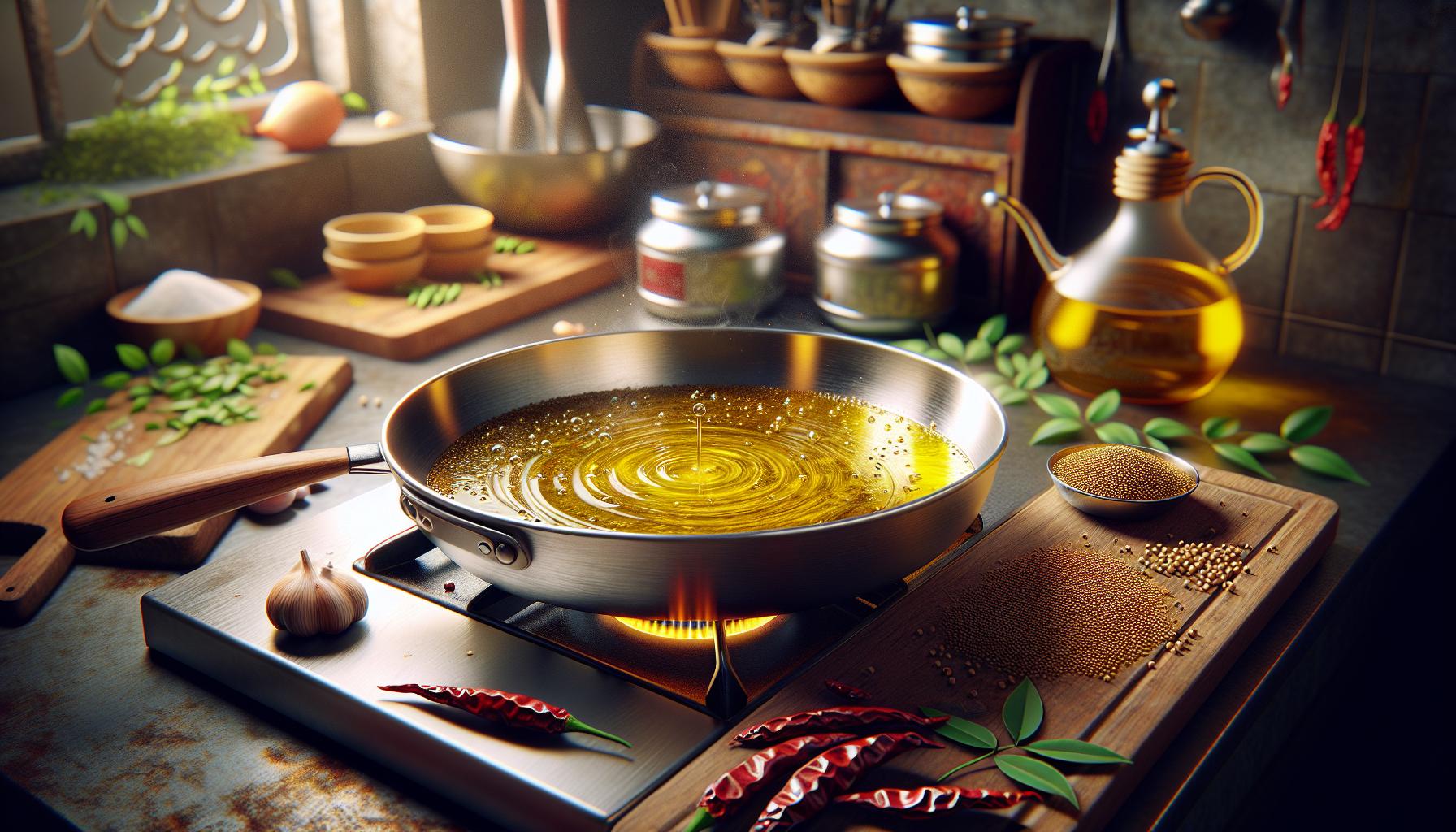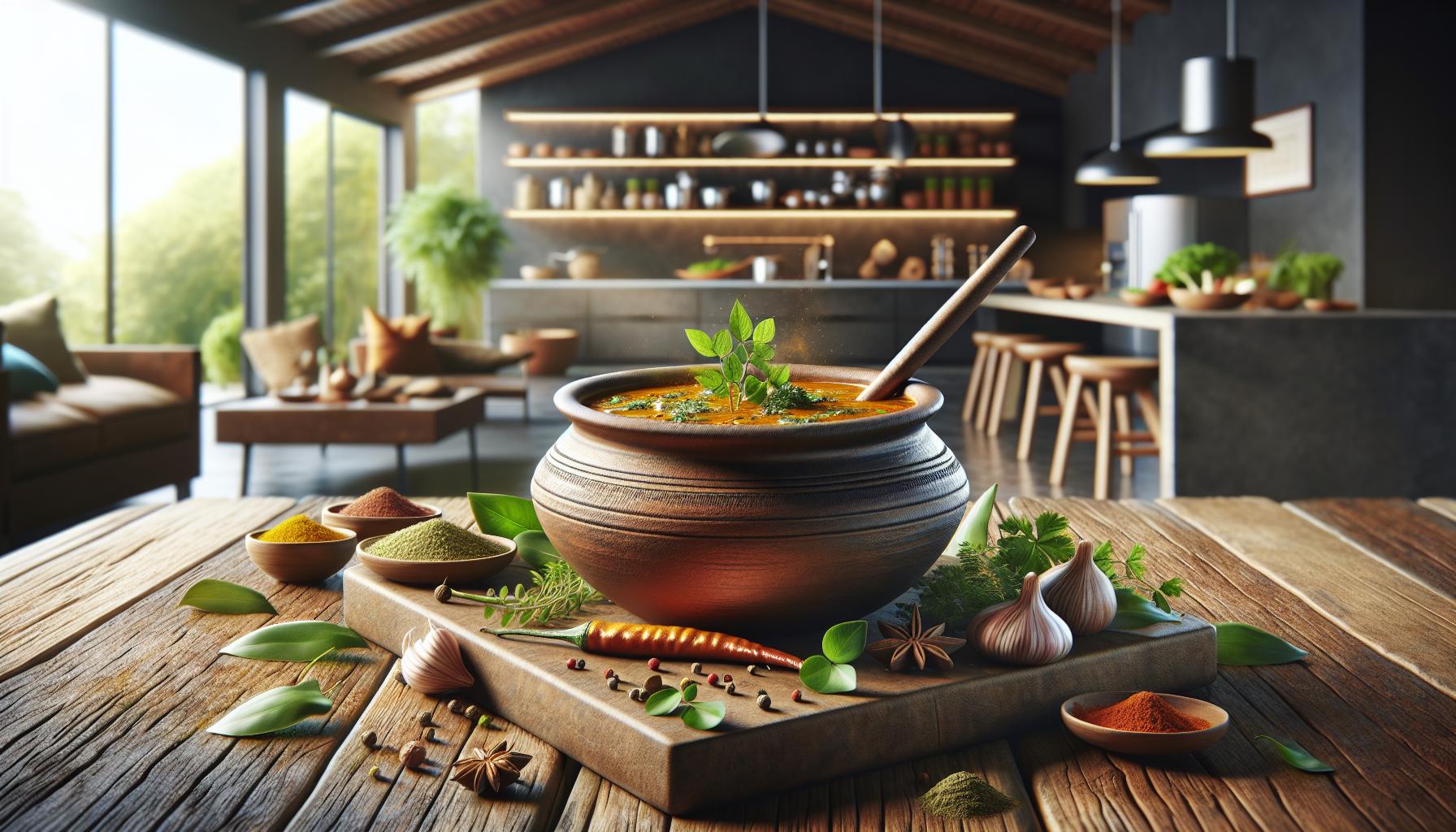Indian Cooking Techniques captivates food lovers worldwide with its aromatic spices bold flavors and time-tested cooking techniques. From the sizzling tawa to the ancient tandoor these methods have been passed down through generations creating dishes that dance on the taste buds and warm the soul.
Behind every mouthwatering curry and perfectly charred naan lies a treasure trove of cooking techniques that might seem mystifying to the uninitiated. But don’t let that intimidate you! Whether it’s the art of tempering spices (tadka) or the slow-cooking magic of dum these techniques aren’t just cooking methods – they’re your ticket to unlocking authentic Indian flavors in your kitchen. From street food vendors in Mumbai to five-star chefs in Delhi these fundamental practices form the backbone of Indian gastronomy.
Indian Cooking Techniques
Indian Cooking Techniquese relies on a diverse array of spices that create complex flavor profiles. These spices form the foundation of authentic Indian dishes through careful selection and precise combinations.
Whole vs Ground Spices
Whole spices retain essential oils longer than their ground counterparts, making them ideal for extended storage. Storage in airtight containers keeps whole spices fresh for 12-18 months versus 3-6 months for ground varieties. Common whole spices include cardamom pods, cinnamon sticks, cumin seeds, coriander seeds, black peppercorns. Grinding releases aromatic compounds, intensifying flavors in dishes like garam masala or curry powder. Heat activation through dry roasting brings out distinct flavors: nutty notes in cumin, citrus hints in coriander, warmth in black peppercorns.
Creating Traditional Spice Blends
Traditional Indian spice blends combine specific ratios of ingredients to create signature flavor profiles. Popular blends include:
| Spice Blend | Key Ingredients | Regional Origin |
|---|---|---|
| Garam Masala | Cardamom, Cinnamon, Cloves | North India |
| Panch Phoron | Fennel, Cumin, Nigella | Bengal |
| Sambar Powder | Coriander, Red Chilies, Fenugreek | South India |
Master spice blends incorporate toasting techniques to enhance flavors. Fresh grinding ensures maximum potency when preparing blends like chat masala or tandoori masala. Regional variations reflect local taste preferences with distinct combinations of sweet, spicy, tangy elements.
The Art of Tempering (Tadka)

Tempering transforms Indian Cooking Techniques by infusing hot oil or ghee with aromatic spices. This foundational technique releases essential oils from spices to create layers of flavor throughout the dish.
Common Tempering Ingredients
The essential tempering ingredients include mustard seeds, cumin seeds, dried red chilies, curry leaves, asafoetida (hing), bay leaves, coriander seeds, peppercorns, cardamom pods, cloves, garlic, ginger, onions, cinnamon sticks, urad dal, chana dal, turmeric powder. Each ingredient serves a distinct purpose in the tempering process:
| Ingredient | Flavor Profile | Common Uses |
|---|---|---|
| Mustard Seeds | Nutty, Sharp | Dals, Vegetables |
| Cumin Seeds | Earthy, Warm | Curries, Rice |
| Curry Leaves | Citrusy, Herbal | South Indian Dishes |
| Asafoetida | Garlicky, Pungent | Legumes, Vegetables |
Proper Tempering Techniques
Heat ghee or oil in a small pan until it shimmers at medium-high temperature. Add spices in the correct sequence based on their cooking time. Mustard seeds go first until they pop. Cumin seeds follow once the mustard seeds crackle. Add dried red chilies curry leaves next. Pour the tempered mixture immediately over the prepared dish to infuse maximum flavor.
| Temperature | Oil Type | Duration |
|---|---|---|
| Medium-High | Ghee | 2-3 minutes |
| Medium | Mustard Oil | 1-2 minutes |
| Medium-High | Coconut Oil | 2-3 minutes |
Traditional Indian Cooking Methods

Traditional Indian Cooking Techniques methods encompass techniques that enhance flavors through specific equipment and time-tested processes. These methods create distinct tastes and textures unique to Indian cuisine.
Slow Cooking in Clay Pots
Clay pot cooking infuses dishes with earthy flavors and retains essential nutrients through even heat distribution. Traditional Indian clay pots called ‘handis’ create a natural insulation that maintains consistent temperatures throughout the cooking process. Foods like biryanis, lentils, and curries develop complex flavors when cooked in these porous vessels for 3-4 hours at low temperatures. Clay pots require seasoning with oil before first use, extending their lifespan to 2-3 years with proper maintenance.
Pressure Cooking Indian Dishes
Pressure Indian Cooking Techniques reduces cooking time by 70% while preserving nutrients and intensifying flavors. Indian kitchens utilize pressure cookers for staples like lentils, rice, and meat dishes at 15 PSI pressure. Cooking times vary: 10 minutes for rice, 20 minutes for lentils, and 30 minutes for meat dishes. Multiple whistles from the cooker indicate different cooking stages, with 2-3 whistles signaling completion for most dishes.
Tandoor-Style Cooking
Tandoor ovens reach temperatures of 900°F (482°C), creating charred exteriors while maintaining tender interiors. Clay tandoors impart smoky flavors to dishes like naan bread, tandoori chicken, and kebabs through radiant heat cooking. Marinated meats cook in 12-15 minutes, while flatbreads require 2-3 minutes of cooking time. Modern electric tandoors offer similar results at temperatures between 450-500°F (232-260°C) for home cooking.
Working With Indian Breads

Indian breads form a cornerstone of the cuisine, ranging from soft rotis to buttery naans. Each bread type requires specific techniques for preparation and cooking to achieve the perfect texture and taste.
Rolling and Shaping Techniques
The rolling process for Indian breads starts with creating smooth dough balls called pedas. A wooden rolling pin (belan) moves in circular motions from the center outward to create uniform thickness. Rotis require gentle pressure to form 6-8 inch circles with 2-3 mm thickness. Naan dough stretches by hand into an oval shape with 1/4 inch thickness. Paratha dough folds into triangular or square shapes with multiple layers. Proper dusting with dry flour prevents sticking during rolling, while maintaining even edges ensures consistent cooking.
Proper Cooking Temperature
Cast iron tawas heat to 375°F (190°C) for rotis marked by small brown spots. Tandoors reach 900°F (480°C) for naans exhibiting charred bubbles. Electric griddles maintain 350°F (175°C) for parathas showing golden-brown patches. Direct flame contact creates 30-second intervals for phulkas to puff completely. Temperature control affects browning patterns patchy heating leads to uneven cooking. Different breads cook at varying temperatures based on their thickness dough composition oil content.
Mastering Rice Preparation
Rice forms the foundation of countless Indian dishes, requiring precise techniques to achieve optimal texture and flavor. The methods vary based on the dish type and regional preferences, with specific attention to grain selection, washing and soaking times.
Perfect Basmati Rice Methods
Basmati rice preparation starts with thorough rinsing to remove excess starch until the water runs clear. Soaking the rice for 30 minutes allows the grains to absorb moisture, resulting in longer, separate grains after cooking. The ideal rice-to-water ratio is 1:1.5 for stovetop cooking at medium heat for 12 minutes. Advanced techniques include adding aromatic elements like bay leaves, cardamom pods or cinnamon sticks to the cooking water. Expert cooks use the finger measurement method: water level reaches the first joint of the index finger when placed on top of the rice.
Biryani Layering Technique
Authentic biryani employs the dum method, creating distinct layers of partially cooked rice and marinated meat or vegetables. The bottom layer consists of marinated protein, followed by 50% cooked rice layers interspersed with saffron-infused milk, fried onions, mint leaves and ghee. Each layer serves a specific purpose: the bottom layer provides intense flavors, middle layers absorb aromas, and the top layer creates a golden crown. Sealing the pot with dough ensures steam retention, while cooking occurs on low heat for 25 minutes. Professional chefs maintain a 2:1 ratio of rice to protein for optimal balance.
Sauce and Gravy Foundations
Indian sauces and gravies form the backbone of countless dishes, incorporating complex layers of spices and aromatics. These foundational elements transform simple ingredients into rich, flavorful meals through specific cooking techniques and ingredient combinations.
Base Gravy Preparation
Base gravy preparation starts with the golden trio of onions, ginger, and garlic sautéed in oil or ghee until caramelized. Onions cook for 25-30 minutes at medium heat until deep brown, releasing natural sugars that create depth. The masala base incorporates ground spices like turmeric, coriander, and cumin, cooked for 3-4 minutes to eliminate raw flavors. Tomatoes add tanginess and body to the gravy, simmering for 15-20 minutes until oils separate from the mixture. Restaurant-style gravies utilize large batches of pre-prepared base sauce, stored for up to 5 days in refrigerated conditions at 40°F (4°C).
Thickening Agents
Traditional Indian gravies gain thickness through natural ingredients rather than flour-based thickeners. Ground cashews or almonds create rich, creamy textures in dishes like korma, using 1/2 cup nuts per 4 cups of gravy. Onion paste adds body while intensifying flavor, requiring 2 large onions ground to paste for every 3 cups of sauce. Fresh coconut paste thickens coastal curries, incorporating 1 cup of ground coconut per 4 cups of liquid. Yogurt stabilizes gravies while adding tang, using 1 cup whisked yogurt per 3 cups of sauce when tempered properly at low heat.
Indian cooking techniques represent a perfect blend of art science and tradition. These time-honored methods from tempering spices to creating complex gravies showcase the depth of India’s culinary heritage. Anyone can master these techniques with patience practice and the right guidance.
The beauty of Indian cooking lies in its adaptability. While staying true to traditional methods home cooks can adjust techniques to suit modern kitchens and lifestyles. Understanding these fundamental cooking principles opens up a world of possibilities for creating authentic flavorful Indian dishes at home.



